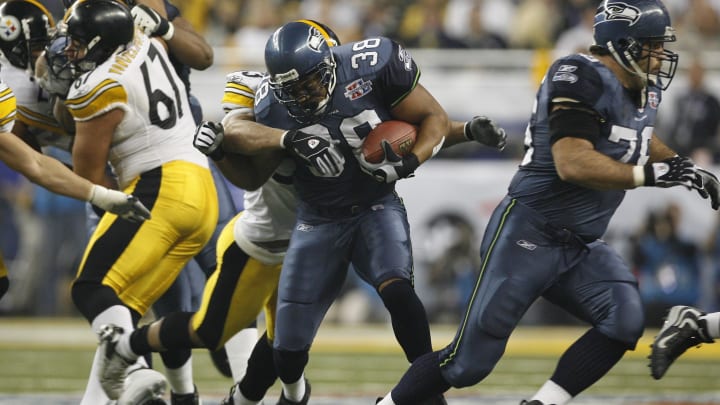Ex Seattle Seahawks RB Explains Super Bowl XL Disadvantage

Despite what one might expect, the Seattle Seahawks' first Super Bowl appearance in franchise history is often viewed as one to forget.
In 2005, the Seahawks earned the top seed in the NFC with a 13-3 record, then powered their way through the playoffs to punch their ticket to Super Bowl XL at Ford Field in Detroit. There, they met the Pittsburgh Steelers, the sixth seed in the AFC, which on paper should have given them an advantage.
However, that was far from the case. The Seahawks fell to Steelers 21-10 in a game where nothing seemed to go their way. Some questionable calls are still talked about today, but Seattle failing to capitalize on its chances arguably did even more damage.
Even almost 20 years later, players from both teams are still talking about this game. In a recent book titled "Facing the Pittsburgh Steelers: Players Recall the Glory Years of the Black and Gold" by Sean Deveny, former Seattle fullback Mack Strong explained the inherent advantage Pittsburgh had in that matchup. Rather than harping on the officials like many before him, though, Strong instead pointed to the overwhelming ratio of Steelers fans in the crowd.
“Where it was different, though, was on game day. Detroit is like an hour flight from Pittsburgh. There were probably 60,000 Steelers fans there and about 10,000 Seahawks fans. It definitely felt like a home game for them, an away game for us," Strong said. "That was the only time— I stepped out onto that field and I was like, 'This is different.'
"It was supposed to be neutral. But we were just building our fan base at the time, and the Steelers, of course, had 30 or 40 years of winning and history behind them. It was weird walking into a neutral stadium and literally trying to figure out, 'Wait, where are our fans at?'”
It doesn't take a detective to figure out why the Steelers had such a strong crowd advantage. Like Strong said, a flight from Pittsburgh to Detroit is just over an hour, while a flight from Seattle to Detroit is over four hours. Add in that the Steelers had history on their side and that Hall of Fame running back Jerome Bettis, a Detroit native, was playing in his final NFL game, and it's easy to see why black and gold dominated the stands.
Even though this game ended in disappointment, the Seahawks would finally earn their first championship eight years later with a 43-8 dismantling of the Denver Broncos in Super Bowl XLVIII.
